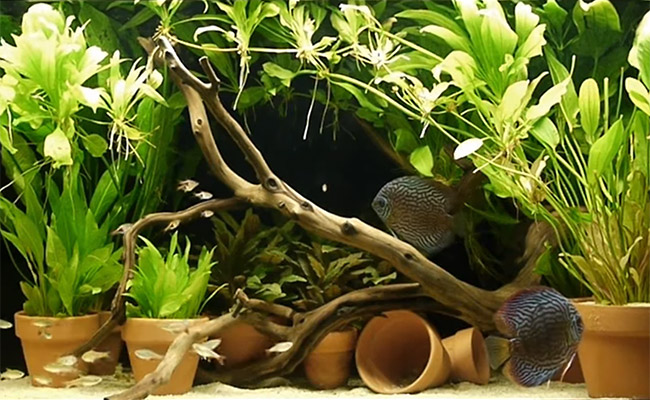
Types of rock you can put in your aquarium and their benefits
If you think that only fishes are the star of an aquarium, well, there is more than that. There are lots of things that can add a more under-the-sea ambiance. One thing can be miniature toys or huts, and in this article, aquarium rocks.
Aquarium rocks are not just there for aesthetic purposes, but they also bear a meaning. They feed the fishes and provide shelter to them. Also, the fishes can explore and feel that they are in their natural habitat.
In this section, we will know the various types of rocks and what they can offer. You can also check Kings of the Aquarium for other guides in maintaining your fish tanks. Let us all ensure that the stones we will use are the best for our tanks. Join us as we unravel the type of stones for aquariums.
What you need to know about aquarium rocks
Aquascaping is a relaxing hobby to do. For some, it relaxes them as they see how their tanks look serene. It’s like an escape to our stressful and busy reality. Moreover, it’s like therapy for our disoriented minds due to stress.
But if you think you can put just any rocks available in your area, well, it does not work that way. So check out the following types of aquarium rocks and enjoy assembling them on your tanks.
Quick reminders before putting your rocks in the tank
As we have mentioned earlier, you don’t just put rocks inside your tanks! Instead, it has some steps to follow to ensure that the organisms inside the tank live nicely.
Know the rock’s alkaline component to ensure that it will not harm the water value, such as PH, GH, KH, and Nitrate. All of this is needed to make sure the fish will have proper oxygenation and end up poisoned.
Test the rock’s carbonate – drop a single drop of muriatic acid and wait for it to sizzle. The stronger the reaction, the more alkaline it is.
Wash thoroughly – make sure that no debris or small animals live in the rocks or that it will not affect the tank’s environment.
Boiling is the key – if after washing you are not confident about its cleanliness, boil it.
Types of aquarium rocks
This section contains the types of aquarium rocks that might suit your taste. Each of these rocks has unique attributes that can help you to make your aquarium incredible. It includes the following;

Seiryu Stone, Mountain Stone
- Origin: Limestone
- Color: Dark gray to light gray with veins
- With rich coves and crevices
- The rocky formations are best for the epiphytic plants and Iwagumi tanks.
- Follow the treatment stated above, then follow these additional treatment suggestions:
- Place with 30 percent HCL solution with water and let sit for 3 to 4 days.
Dragon Stone
- Color: brown and dark yellow with red or green reflections
- Light in weight due to its numerous holes and creeks
- Perfect in keeping water values to normal range
- Follow the treatment above to make it extra clean.
Lava Rock, Porous Stone
- These rocks are naturally from lava
- They are lightweight to a porous structure
- It has numerous micro holes perfect for good bacteria formation inside the aquarium
- It is often used to make the tank more oxygenated
Slate Stone
- Incredibly lightweight
- Mostly is made of slabs
- It has large surfaces perfect for laying eggs
- Color: black, dark green, and with some white veins
- You can use this in large quantities as it does not release carbonate at all
Quartz Rock
- Shapes: sandstone and granite
- It looks like sand gravel or pebbles in the bottom of the tank
- It does not release carbonate
River Stone
- Shape: Oval, smoothed pebble
- Color: Infinite and Natural
- You can get this from rivers but follow the treatment above.
Laterizes, Ceramics
- Made in clay
- Perfect in mimicking river basins structure
- Good for laying eggs
Rainbow Stone
- Color: White, orange, red, and green
- Origin: Sedimentary, Mexico
- It does not release carbonates so that you can use this in large quantities
Pagoda Stone
- It has several layers of gray and brown
- It somehow looks like a wood
- It does not release eBay carbonate
Sodalite Stone
- Also known as Silicate Stone
- Colorful and bright
- Most prominent colors: blue, yellow, or red
- It does not remove any carbonate
Conclusion
The rocks you will put inside your aquarium depending on the aesthetic designs you will follow. You can also do your procedure. Whichever you are going to follow, making sure that it is safe is essential. Some say that beauty comes with risk, but you can safely achieve beauty if you consider all other aspects.
We are happy to know that this has guided you well in identifying which aquarium rock you are going to use. So let’s both enjoy that under the water experience by just looking at our unique tanks.





